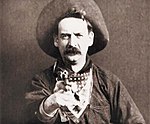Social Deviance



The study of Social Deviance is the study of the violation of cultural norms in either formal (criminal) or informal (deviant) contexts.
Social deviance is a phenomenon that has existed in all societies where there have been norms. There are two possibilities for how an individual will act in the face of social norms; conform or violate. There are implicit social norms and explicit social norms. Explicit social norms are not necessarily laws (such as a sign at a computer lab that says food and drink are prohibited). In reality, there is often a blend of conformity and deviance in the ways people behave. Rarely if ever does a person deviate from or conform to all norms. Furthermore, some behaviors in themselves reflect both conformity and deviance at once. Consider breaking the speed limit, which is technically a legal violation, but which is also conformist, particularly on freeways where motorists "go with the flow." That is a critical feature of deviance, conformity, and norms. Relativity abounds. That is, norms can change over time (e.g. women in the paid labor force), depend on situational context (e.g. laughing at a party as opposed to doing so at a funeral), depend on statuses (e.g. an adolescent blowing up neighbors' mailboxes as opposed to an elderly woman doing so), and any number of other factors. But it's not all relative. There are forms of deviance (and certain norms) that are about as universal as anything in the social sciences can be, such as when one maliciously harms a child. In light of the way we think about norms, deviance, and conformity, many thinkers throughout history have tried to explain the causes behind deviance.
A Word About Theories
Social science theories are just what they are: theories. The philosophers who have come up with these theories believe in them because they have made a set of the assumptions by their observations and they have made conclusions based on these assumptions. However, as the reality of the world is open to interpretation, each theory describes the world in its own unique way. No theories are wrong if they are supportable by facts and observations. These theories you will learn are just ways that thinkers have used to describe the world around them. Just remember that you do not have to agree with a particular theory, but you must be able to understand all theories in order to make a conclusion about the world in which you live.
The best way to understand a particular ideology is to think as a philosopher would think. How would believers of a particular theory present a solution to a particular problem? Thinkers in different schools of thought will come up with different answers because of the differences in their assumptions. Make sure you understand how different theorists think.
Most importantly, understand that these theories are constantly being altered, borrowed from, and in some of the cases, discredited completely. Theories are not rules to the world but rather ways to look at the world. A person can look at the world in different perspectives and can combine different assumptions of theories to describe it. No matter how different theories can be, they can almost always be combined because they are almost never mutually exclusive.
Contents
- What Is Crime And Deviance?: Before we can understand what crime and deviance are, it is necessary to know that crime and deviance are changeable in nature. John Hagan in his book Crime And Disrepute states two theories of describing crime before presenting the most commonly used approach.
- Early Theories: Before the three classical branches of the sociological approach to deviance, there were early theories in criminology that attempted to define and explain crime in the context of the individual (instead of in the context of the individual as a part of the whole of society). These early theories helped to pave the way for modern sociological explanations of deviance.
- Structural-Functionalism: The structural-functionalist school of sociology is concerned with macro-level explanations. Therefore, this school is interested primarily in how norms and institutions fit in the study of deviance.
- Symbolic Interactionism: The symbolic interactionist school of sociology came up as a counterpoint to the structural-functionalist view. This school is interested primarily in individual-to-individual interactions by way of communication through symbols (the symbolic, subjective definitions of objects and ideas in the world; definitions that may hold different meanings for different individuals).
- Power Conflict Theories: Sociologists and philosophers who take on the power-conflict perspective believe that structural-functionalists and symbolic interactionists do not adequately take into account the use (or abuse) of power within societies. Many thinkers of this school tend to base their explanations of crime from the division of classes and the unequal distribution of power among different groups within the context of the larger group of the society.
- Social Control: Social control refers to the various means used by a society to bring its members back into line with cultural norms.
References
- Hagan, John. Crime And Disrepute. Thousand Oaks: Pine Forge Press, 1994.
